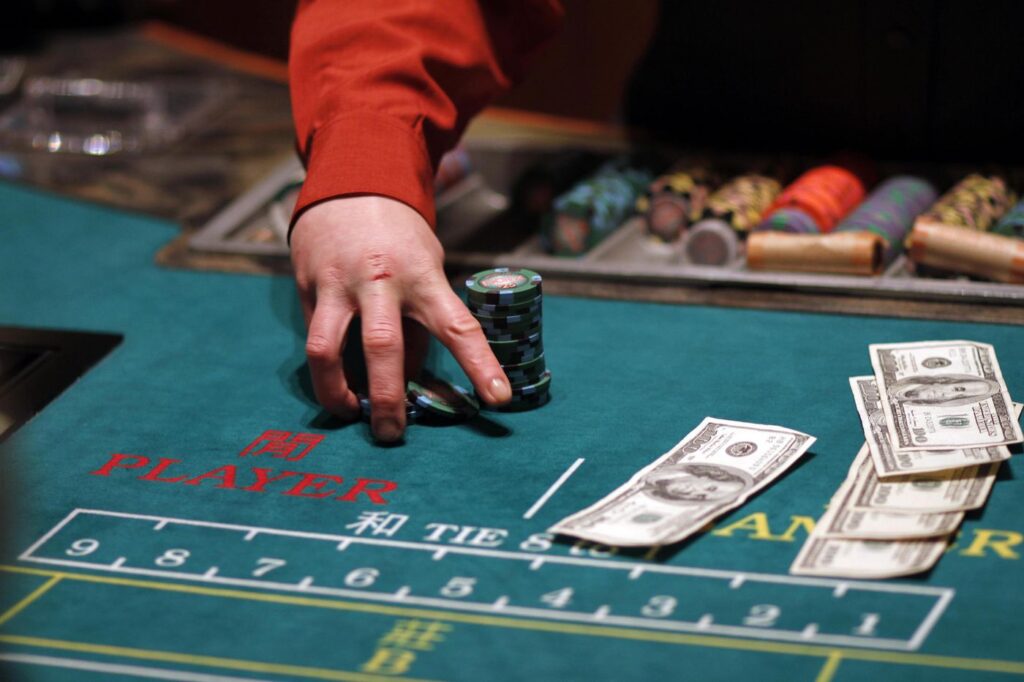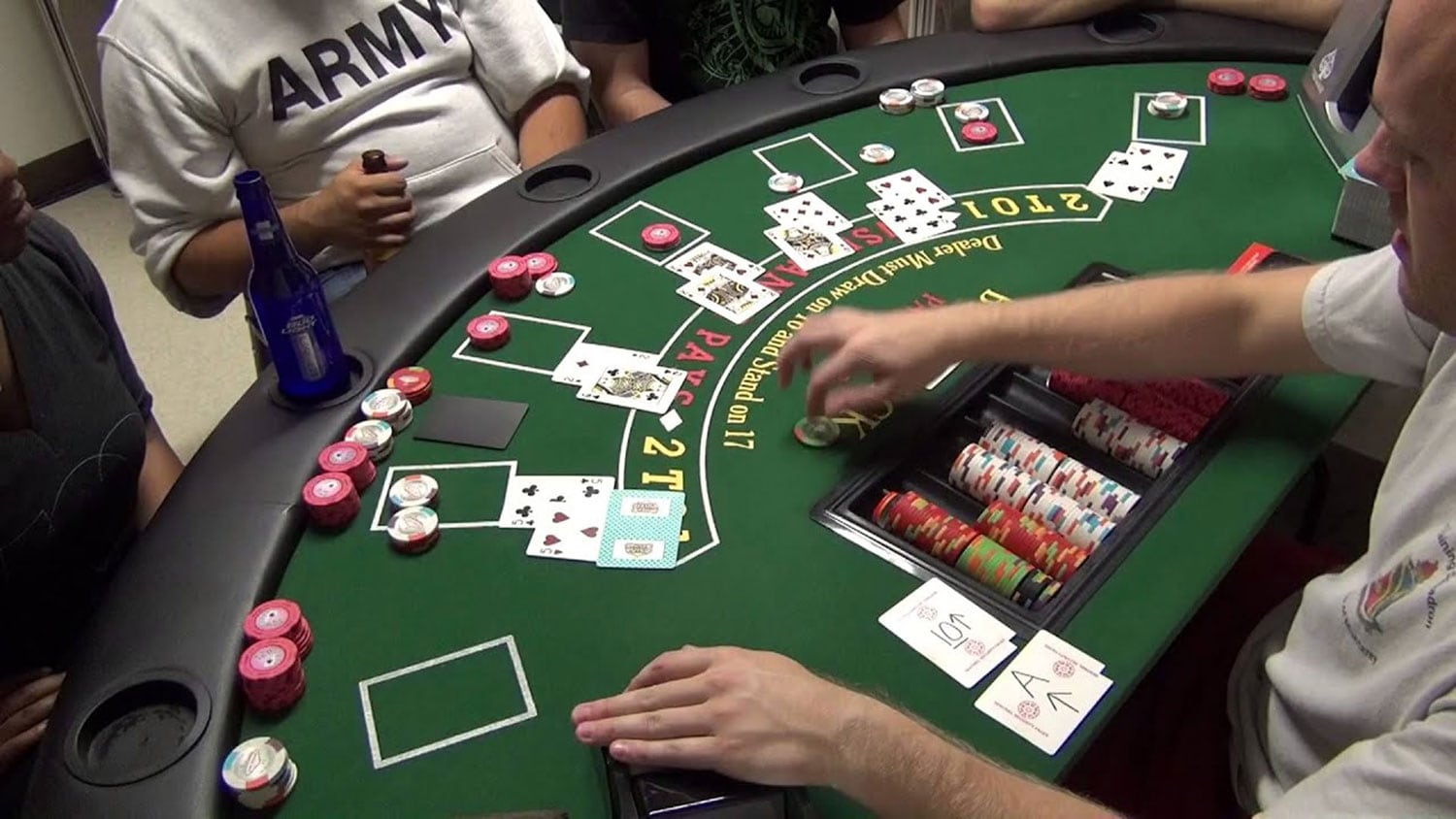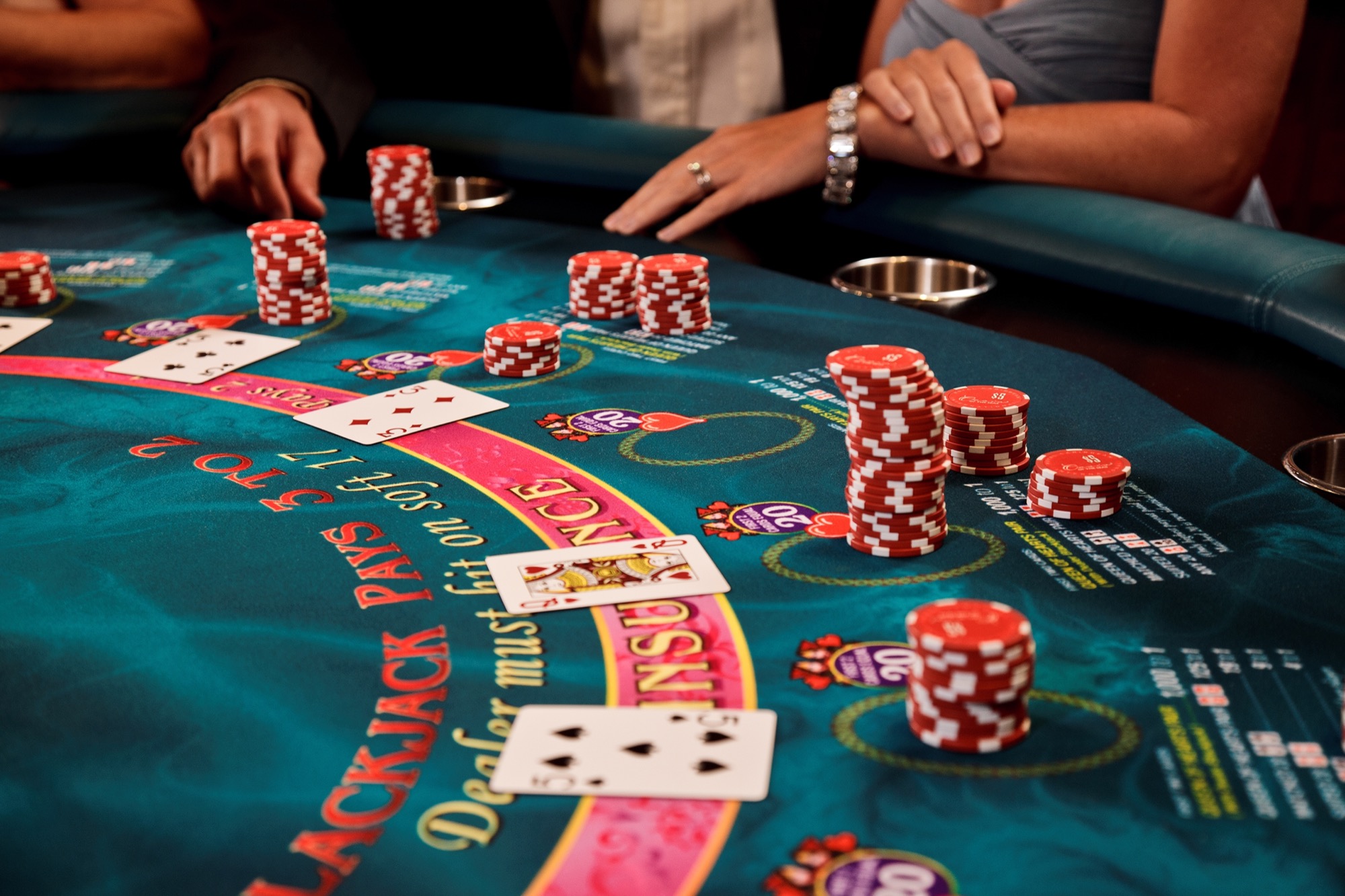Introduction
What Are Playing Cards Made Of: Playing cards have been an integral part of entertainment and gaming for centuries, captivating people of all ages and cultures with their versatility and charm. But have you ever wondered what these fascinating cards are made of? The answer lies in the careful crafting and selection of materials that contribute to their durability, feel, and overall performance during gameplay.
We will explore the composition of playing cards, delving into the two primary materials used in their production: paper and plastic. Traditional paper cards have a long history and continue to be a popular choice for casual gaming and social gatherings, while modern plastic cards have emerged as a preferred option for professional play and high-stakes games.
We will examine the features and characteristics of each type, understanding why players may lean towards one over the other based on personal preferences and intended usage. From the delicate texture of paper cards to the sleek resilience of plastic, both materials have their allure and unique appeal.
Join us as we unravel the secrets behind playing cards’ composition, gain insights into their production processes, and explore the distinctive attributes that make these cards a beloved and timeless source of entertainment worldwide. Let us embark on this journey into the world of playing cards, where tradition meets innovation, and the art of gaming continues to thrive.
What are playing cards coated with?
Varnish is the most common finish type used for playing cards. This liquid gloss finish is applied by the offset printing press to seal in and protect the ink. Lamination is the most protective finish and makes your cards water resistant.
Playing cards are typically coated with a layer of finish or coating to enhance their durability, feel, and performance during gameplay. The most common types of coatings used on playing cards include:
1. Plastic Coating: Many modern playing cards are coated with a layer of plastic, often referred to as PVC (polyvinyl chloride) or cellulose acetate. Plastic-coated cards are more durable, water-resistant, and can withstand frequent use without showing signs of wear and tear. This coating provides a smooth and glossy surface, making shuffling and dealing cards easier.
2. Linen Finish: Some playing cards feature a linen finish, which is a textured coating that gives the cards a slightly rough and linen-like feel. This finish provides better grip and handling, making the cards less slippery during gameplay. Linen-finished cards are popular among card players who prefer a more traditional and tactile feel.
3. Air-Cushion Finish: The air-cushion finish is a type of coating used by the United States Playing Card Company (USPCC) on popular brands like Bicycle. This finish is designed to create a cushion of air between the cards, improving their ability to slide and glide smoothly during shuffling and dealing.
4. UV Coating: Some premium and specialty playing cards may have a UV coating, which adds a layer of protection against fading and wear caused by exposure to sunlight.
The type of coating used on playing cards can affect their performance and durability, and different players may have preferences for specific finishes based on their playing style and personal preferences.

Where are playing cards made?
There are three main companies who make playing cards: United States Playing Card Company (USPCC) in the USA, Cartamundi in Belgium, and Legends Playing Cards in Asia. While there are others, these three companies combined produce tens of millions of decks of cards every single year.
Playing cards are manufactured in various countries around the world, with some regions being more well-known for their production. The production of playing cards involves a combination of printing, cutting, and finishing processes. Here are some key locations where playing cards are commonly made:
1. United States: The United States is a significant producer of playing cards, with iconic brands like Bicycle and Bee being manufactured by the United States Playing Card Company (USPCC). USPCC is one of the largest playing card manufacturers globally and supplies cards not only for domestic use but also for international markets.
2. China: China is a major player in the global playing card industry. Many playing cards sold worldwide are produced in China due to its large manufacturing capabilities and cost-effectiveness.
3. Belgium: Belgium is known for its high-quality playing cards, and many premium brands are manufactured in the country. Belgian-made cards often have superior card stock and printing quality.
4. Germany: Germany has a long history of playing card production and is renowned for its intricate designs and attention to detail. Some specialty and luxury decks are crafted in Germany.
5. India: India is another significant producer of playing cards, with many decks being manufactured for domestic use and export to other countries.
These are just a few examples of countries involved in playing card production. The playing card industry is global, with manufacturers in different regions contributing to the wide variety of decks available in the market.
How are card game cards made?
The process at the factory basically involves four main steps, which begins with making the paper stock, printing onto a roll of paper, cutting the sheets into individual cards, and finally assembling the deck.
Card game cards are made through a multi-step manufacturing process that involves printing, cutting, and finishing. The process may vary slightly depending on the manufacturer and the type of cards being produced. Here is a general overview of how card game cards are made:
1. Printing: The first step involves printing the card designs on large sheets of cardstock. Cardstock is a type of thick, durable paper specifically designed for playing cards. Printing is typically done using offset printing or digital printing techniques, depending on the complexity and volume of the card production.
2. Cutting: Once the designs are printed, the large sheets of cardstock are cut into individual cards using cutting machines. The cutting process ensures that each card is of the same size and shape.
3. Coating: After cutting, the cards are coated with a finish to enhance their durability and feel during gameplay. Common coatings include plastic coatings (PVC or cellulose acetate) for standard decks and specialty finishes like linen or UV coatings for premium decks.
4. Packaging: After coating, the cards are sorted and packaged into sets or decks. They may be shrink-wrapped or placed inside custom-designed tuck boxes for retail sale.
5. Quality Control: Throughout the manufacturing process, quality control checks are performed to ensure that the cards meet the desired standards of quality, including color accuracy, alignment, and finish consistency.
The entire process is carefully managed to ensure that the cards are of high quality and meet the expectations of players and collectors. Different manufacturers may also add unique design elements or specialty features to cater to specific markets or preferences.
What makes playing cards shiny?
The layer of gloss UV coating helps to protect the cards from scratches and also adds a brilliant shine to each card as well as boosting the color and contrast of your artwork designs.
Playing cards appear shiny due to the coating or finish applied to the surface of the cardstock during the manufacturing process. This coating creates a smooth and glossy surface that enhances the appearance and feel of the cards. The shiny effect is achieved through various types of coatings, including:
1. Plastic Coating: Many playing cards are coated with a layer of plastic, such as PVC (polyvinyl chloride) or cellulose acetate. This plastic coating gives the cards a glossy and water-resistant surface, making them more durable and easier to shuffle and handle.
2. UV Coating: Some playing cards feature a UV coating, which is a clear and protective layer applied to the surface of the cards. The UV coating not only adds shine but also helps protect the cards from fading and wear caused by exposure to sunlight.
3. Gloss Varnish: Gloss varnish is another type of clear coating that can be applied to playing cards. It provides a glossy finish, making the cards appear shiny and smooth.
The shiny appearance of playing cards not only enhances their visual appeal but also contributes to their performance during gameplay. The smooth surface created by the coating allows the cards to slide and glide more easily, facilitating smooth shuffling and dealing. Additionally, the shiny finish adds a touch of elegance and sophistication to the cards, making them a popular choice for both casual players and collectors.

Are playing cards paper or plastic?
A playing card is a piece of specially prepared card stock, heavy paper, thin cardboard, plastic-coated paper, cotton-paper blend, or thin plastic that is marked with distinguishing motifs. Often the front (face) and back of each card has a finish to make handling easier.
Playing cards can be made from either paper or plastic materials, and each type offers its own set of advantages and characteristics.
1. Paper Playing Cards: Traditional playing cards have been historically made from paper cardstock. This type of card is more commonly found in standard decks used for casual gameplay and can be easily produced in large quantities. Paper cards are lightweight and have a softer feel, which some players prefer for casual games and social gatherings. However, they are more prone to wear and tear and may not be as durable as plastic cards.
2. Plastic Playing Cards: In recent years, plastic playing cards have gained popularity due to their enhanced durability and performance. Plastic cards are typically made from PVC (polyvinyl chloride) or cellulose acetate, which adds a layer of plastic coating to the cardstock. This plastic coating makes the cards more resistant to water, bending, and fading, increasing their lifespan and allowing for easier cleaning if spills occur. Plastic cards are commonly used in casinos, professional poker tournaments, and other high-stakes games where durability and performance are critical.
Both paper and plastic playing cards have their unique appeal, and the choice between them often comes down to personal preference and the intended use. Casual players and those looking for budget-friendly options may opt for paper cards, while serious players and casino-goers may prefer the longevity and performance of plastic cards.
What are the two primary materials used in making playing cards?
The two primary materials used in making playing cards are paper and plastic.
1. Paper: Traditional playing cards have a long history of being crafted from paper cardstock. This type of material offers a classic and delicate texture that many players find charming. Paper cards are lightweight and have a softer feel, making them a popular choice for casual gameplay and social gatherings. They are often used in standard decks for various card games, as well as for traditional card tricks and magic performances. Paper cards are relatively easy and cost-effective to produce, which contributes to their widespread availability and affordability.
2. Plastic: In recent years, plastic playing cards have gained significant popularity, especially in professional gaming settings and high-stakes tournaments. These cards are typically made from PVC (polyvinyl chloride) or cellulose acetate, and they have a plastic coating applied to the cardstock. Plastic cards are highly durable, resistant to bending, and have superior water resistance compared to paper cards. This resilience makes them ideal for prolonged and intense gameplay, as they can withstand frequent shuffling and handling without showing signs of wear and tear. Plastic cards are often used in casinos, poker rooms, and other competitive settings where longevity and performance are essential.
The choice between paper and plastic playing cards largely depends on personal preferences, the level of gameplay, and the intended use. While paper cards offer a classic and nostalgic appeal, plastic cards are favored for their durability and water resistance, making them the preferred choice in professional gaming and high-stakes environments.

Why do some players prefer paper cards over plastic cards for casual gameplay?
Some players prefer paper cards over plastic cards for casual gameplay for several reasons:
1. Nostalgic Appeal: Paper cards evoke a sense of tradition and nostalgia, reminding players of the classic card games they enjoyed during childhood or with family and friends. The tactile and slightly textured feel of paper cards can create a sentimental connection to past memories, adding to the overall enjoyment of the gaming experience.
2. Softer Feel: Paper cards have a softer and more flexible feel compared to plastic cards. Some players find this characteristic more comfortable and enjoyable, particularly during extended gaming sessions. The gentle texture of paper cards can be appealing to those seeking a more relaxed and laid-back atmosphere during casual play.
3. Affordability: Paper cards are generally more affordable than plastic cards. For casual players who engage in occasional gaming or simply enjoy card games as a recreational pastime, paper cards offer a cost-effective option without compromising the enjoyment of the game.
4. Easy to Shuffle: Paper cards often have a slightly more forgiving surface when shuffling, especially for players who are less experienced with shuffling techniques. This ease of shuffling can enhance the flow of the game and make it more accessible to players of all skill levels.
5. Traditional Aesthetics: Some players appreciate the traditional aesthetics of paper cards, including the classic designs and artwork found on many standard decks. The timeless appearance of paper cards can add a touch of elegance and authenticity to casual gaming sessions.
In essence, the preference for paper cards in casual gameplay is often rooted in the sense of familiarity, comfort, and affordability they provide, making them a beloved choice for players seeking a more traditional and relaxed card-playing experience.
What advantages do plastic playing cards offer that make them popular in professional poker tournaments and casinos?
Plastic playing cards offer several advantages that make them popular in professional poker tournaments and casinos:
1. Durability: Plastic cards are highly durable and can withstand extensive use without showing signs of wear and tear. In high-stakes and fast-paced poker tournaments where cards are constantly shuffled and dealt, plastic cards maintain their quality and integrity over time, ensuring fair gameplay.
2. Water Resistance: Plastic cards are resistant to water and spills, making them ideal for casinos and poker rooms where drinks are often present during gameplay. The water-resistant feature prevents damage to the cards and helps maintain their smooth surface, ensuring easy shuffling and dealing.
3. Easy to Clean: The plastic coating on these cards allows for easy cleaning and maintenance. In busy casino environments, where numerous players handle the cards, regular cleaning is essential to maintain a hygienic playing environment. Plastic cards can be wiped clean without damaging the printing or affecting the card’s performance.
4. Smooth Handling: Plastic cards have a sleek and smooth surface, allowing for easy handling during shuffling, dealing, and gameplay. The cards glide effortlessly over each other, making shuffling more efficient and enhancing the overall flow of the game.
5. Increased Longevity: Plastic cards have a longer lifespan compared to paper cards. In professional poker tournaments and casinos, where decks are frequently used, the longevity of plastic cards reduces the need for frequent replacement, saving both time and resources.
6. Fade-Resistant: Plastic cards are less prone to fading or discoloration from exposure to light or handling. This ensures that the cards’ designs and markings remain clear and vibrant, providing consistent gameplay experiences.
Due to these advantages, professional poker players, casinos, and poker tournaments prefer plastic playing cards for their reliability, performance, and longevity, creating a seamless gaming experience for both players and organizers alike.
Conclusion
The world of playing cards is a fascinating realm of entertainment and gaming, capturing the hearts of people across generations and cultures. The materials used in their construction play a pivotal role in their performance, durability, and overall appeal. Traditionally, playing cards were crafted from paper cardstock, known for its delicate texture and charm. Paper cards remain a popular choice for casual gameplay, social gatherings, and nostalgic sentimentality.
However, the advancement of technology and the pursuit of enhanced performance have given rise to plastic playing cards, made from PVC or cellulose acetate. These plastic cards have become favored by serious players, casinos, and professional poker tournaments for their resilience, water resistance, and long lifespan.
The choice between paper and plastic cards ultimately depends on personal preferences, intended use, and the level of gaming. Casual players seeking a classic touch often opt for paper cards, while professional players and high-stakes games lean towards the durability and performance of plastic cards.
Regardless of the material, playing cards continue to unite friends and families, provide endless hours of fun and challenge, and symbolize the timeless art of gaming. From the ancient origins of playing cards to their modern variations, the allure of these beloved cards endures. As technology continues to evolve, we can expect even more innovations and materials to further enhance the playing card experience while preserving the joy and excitement they bring to millions worldwide











































